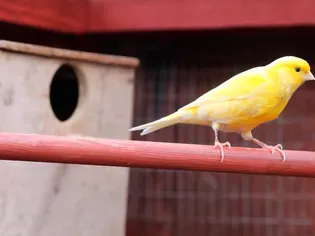Rainbow Lorikeets: Species Characteristics & Care
Updated on 05/26/24

Rainbow Lorikeets: A Guide to Their Species Characteristics and Care
Introduction
Prepare to be mesmerized by the vibrant allure of Rainbow Lorikeets, a captivating species of parrot native to the rainforests of Australia and New Guinea. With their stunning rainbow-hued plumage and playful demeanor, these birds have captured the hearts of bird enthusiasts worldwide. In this comprehensive guide, we delve into the intricate characteristics of Rainbow Lorikeets, exploring their unique traits, care requirements, and the joy they can bring to your life.
Species Characteristics
Plumage:
Rainbow Lorikeets are an explosion of colors, with males showcasing an iridescent plumage that shimmers with shades of red, orange, yellow, green, blue, and purple. Females, while less vibrant, display a softer mix of greens and yellows. The unique coloration serves as camouflage amidst the lush foliage of their native habitat.
Size and Weight:
These small to medium-sized parrots typically measure between 24-30 centimeters (9-12 inches) in length, with weights ranging from 80-160 grams (3-6 ounces). Their compact size makes them suitable for indoor aviaries and home environments.
Diet:
Rainbow Lorikeets belong to the unique group of nectar-feeding parrots. Their brush-tipped tongues are specially adapted to extract nectar from flowers, pollen, and fruits. In captivity, they require a specialized diet consisting of nectar-based food supplements, fruit, and vegetables.
Behavior:
Known for their playful and comical antics, Rainbow Lorikeets are highly social creatures that thrive in communal settings. They form strong bonds with their flock members and enjoy engaging in playful chases and acrobatic displays.
Care Requirements
Housing:
Proper housing is crucial for the well-being of Rainbow Lorikeets. They require a spacious aviary or cage that allows them ample room to fly, climb, and forage. The enclosure should be equipped with perches of varying sizes and textures to cater to their natural perching behaviors.
Diet:
As mentioned earlier, Rainbow Lorikeets have specialized dietary needs. Their diet should consist of a high-quality nectar-based supplement, fresh fruits such as apples, berries, and bananas, and vegetables like corn and sweet potatoes. Hard-boiled eggs and cooked chicken can be offered as occasional treats.
Hygiene:
Maintaining good hygiene is essential for the health of your Rainbow Lorikeet. Regular cleaning of the aviary or cage, along with the provision of fresh water, helps prevent the spread of diseases. Bathing opportunities should be provided to promote feather health and reduce dust accumulation.
Veterinary Care:
Like all pets, Rainbow Lorikeets require regular veterinary checkups to ensure their overall health. These visits allow veterinarians to detect and treat any underlying health issues, such as bacterial infections, parasites, and beak and feather disorders.
Enrichment:
To stimulate their active minds and prevent boredom, Rainbow Lorikeets need regular enrichment activities. Toys such as foraging devices, swings, and mirrors provide mental and physical challenges that keep them engaged and entertained.
Conclusion
Bringing a Rainbow Lorikeet into your life is an enriching and rewarding experience. These captivating parrots bring a splash of color and joy to your home with their playful nature and stunning appearance. By understanding their unique characteristics and providing the proper care, you can ensure that your Rainbow Lorikeet thrives and becomes a cherished companion for years to come.
Examples of Subtopics:
1. Lifespan of Rainbow Lorikeets:
In captivity, Rainbow Lorikeets can live for an average of 15-20 years, making them a long-term commitment. However, with proper care and nutrition, some individuals have been known to live even longer.
2. Common Health Issues:
Like all parrots, Rainbow Lorikeets can be prone to certain health issues, including feather plucking, bacterial infections, and aspergillosis (a fungal infection). Early detection and treatment are crucial for successful outcomes.
3. Breeding Rainbow Lorikeets:
Breeding Rainbow Lorikeets in captivity is possible but requires careful planning and preparation. Providing a suitable nesting box, ensuring a nutritious diet, and monitoring the progress of the chicks are essential for successful breeding.
Explore More Pets

Small Bird Breeds
Gloster Canary: Bird Species Profile

Small Bird Breeds
Java Finch: Bird Species Profile

Small Bird Breeds
Zebra Finch (Chestnut-Eared Finch): Bird Species Profile

Small Bird Breeds
Alexandrine Parakeet: Species Characteristics & Care

Small Bird Breeds
Canary: Bird Species Profile

Small Bird Breeds
Lovebird (Pocket Parrot) Species Profile

Small Bird Breeds
A Guide to Pet Budgie Birds

Small Bird Breeds
Types of Small Parrots
